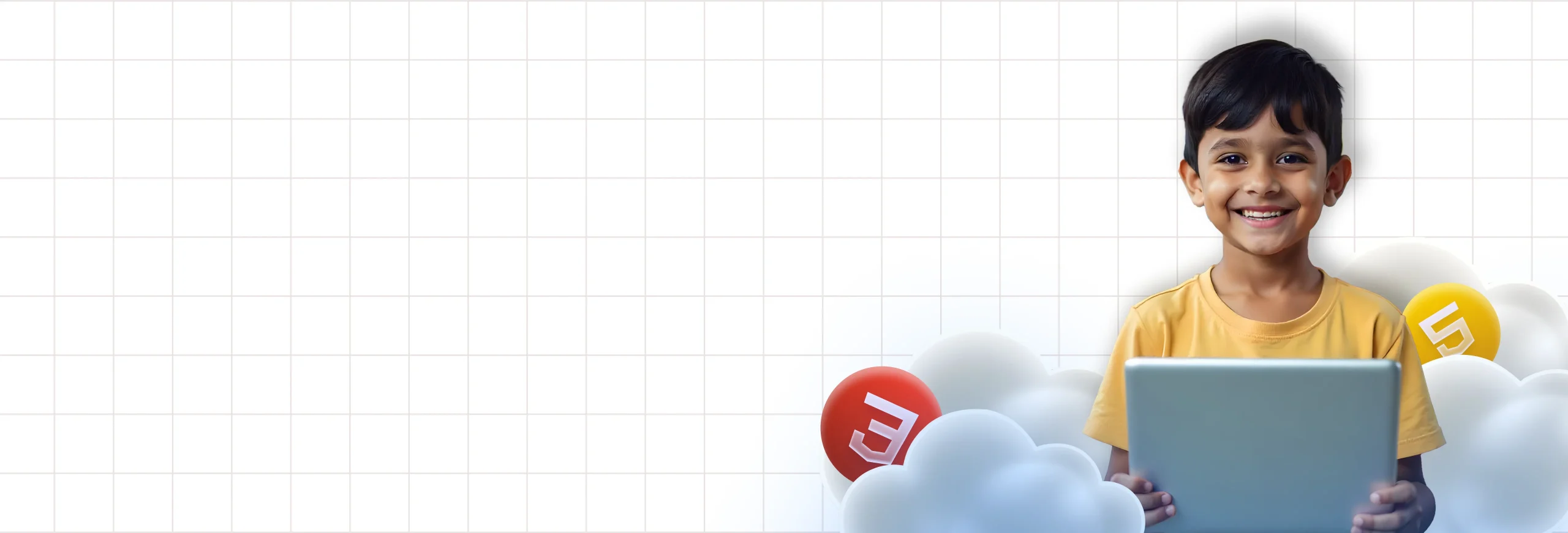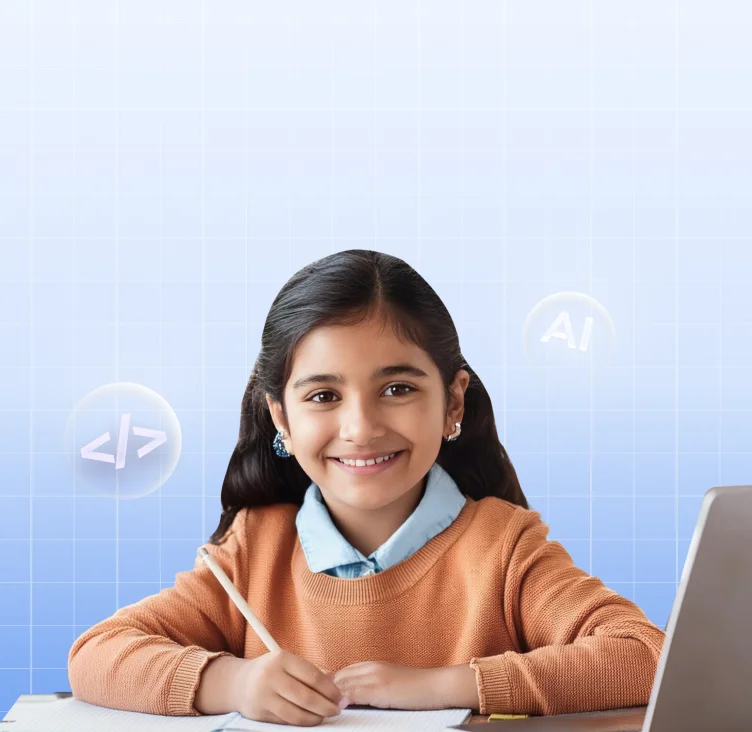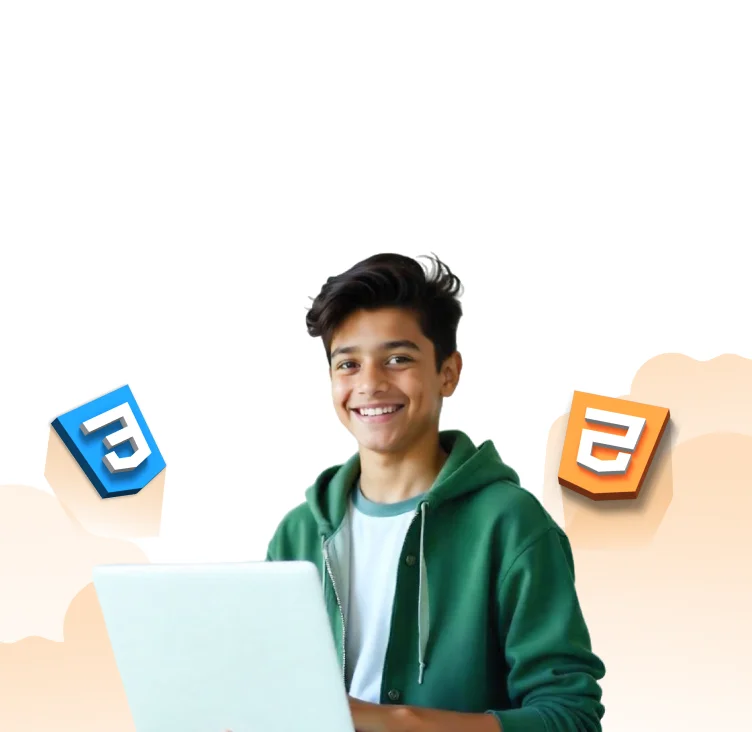10 Important Computer Science Principles Every Kid Should Learn
By Srinithi SankarHave you ever wondered how video games, apps, and websites are created?
From solving puzzles to designing creative games, computer science principles power the digital world we interact with daily. Introducing kids to these principles at an early age helps them become creators rather than just consumers.
In this guide, we’ll explore 10 Essential Computer Science Principles Every Kid Should Learn, covering key concepts like algorithms, coding basics, computational thinking, data management, networks, cybersecurity, and more. By mastering these fundamentals through interactive learning, kids can develop critical thinking, creativity, and a strong foundation for future tech-driven careers. Let’s dive into these exciting concepts!
Essential Computer Fundamentals for Kids
Before jumping into advanced topics, kids need to understand computer science basics. These concepts lay the foundation for logical thinking, problem-solving, and the ability to create amazing projects.
Here’s a breakdown of the 10 essential computer science principles every child should know:
1. Algorithms and Algorithmic Thinking
An algorithm is a step-by-step process used to solve problems or perform tasks. Teaching kids about algorithms introduces them to structured thinking and problem-solving techniques.
Example:
- Baking cookies using a recipe is an algorithm! Each step, from mixing ingredients to baking, follows a sequence of instructions.
- Digital example: Google search algorithms rank websites to show the most relevant results.
Simple Coding Example:
# Algorithm to find the largest number in a list
numbers = [4, 7, 1, 9, 3]
largest = numbers[0]
for num in numbers:
if num > largest:
largest = num
print(“The largest number is:”, largest)
Why it’s important:
- Improves logical reasoning.
- Encourages systematic problem-solving.
2. Coding Concepts and Languages
Coding is the language used to instruct computers to perform tasks. Kids can start with block-based coding platforms like Scratch and then transition to text-based languages such as Python or JavaScript.
Example:
- Coding is like giving directions to a robot—telling it to move forward, turn, or stop.
- Digital example: Building a simple game where characters move based on commands.
Simple Coding Example:
# Simple Python code to print a message
print(“Hello, World!”)
Why it’s important:
- Builds computational thinking.
- Prepares kids for real-world programming challenges.
3. Exploring Computational Thinking: Beyond Coding
Computational thinking involves breaking down complex problems and solving them efficiently. It consists of:
Example:
- Decomposition: Breaking down a large puzzle into smaller pieces.
- Pattern Recognition: Noticing similar patterns while solving math problems.
- Abstraction: Ignoring unnecessary details when solving a problem.
- Algorithms: Creating step-by-step instructions to complete tasks.
Simple Coding Example:
# Decomposing a problem – Checking if a number is even or odd
def check_number(num):
if num % 2 == 0:
print(f”{num} is even.”)
else:
print(f”{num} is odd.”)
check_number(5)
check_number(10)
Why it’s important:
- Enhances critical thinking.
- Builds logical problem-solving abilities.
4. Algorithmic Thinking
Algorithmic thinking is applying algorithms to solve problems systematically. It’s about identifying the most efficient path to a solution.
Example:
- Planning a treasure hunt by determining the shortest route to the prize.
- Digital example: Sorting numbers in ascending or descending order using algorithms.
Simple Coding Example:
# Bubble sort algorithm to sort numbers
def bubble_sort(arr):
n = len(arr)
for i in range(n):
for j in range(0, n – i – 1):
if arr[j] > arr[j + 1]:
arr[j], arr[j + 1] = arr[j + 1], arr[j]
numbers = [64, 25, 12, 22, 11]
bubble_sort(numbers)
print(“Sorted list:”, numbers)
Why it’s important:
- Develops logical and sequential thinking.
- Encourages efficiency and accuracy.
5. Loops
Loops allow kids to repeat a set of instructions until a specific condition is met, reducing repetitive tasks.
Example:
- Brushing teeth twice daily—this is a loop that repeats every day.
- Digital example: In Scratch, making a sprite move back and forth using a loop.
Simple Coding Example:
# Using a loop to print numbers from 1 to 5
for i in range(1, 6):
print(i)
Why it’s important:
- Teaches automation and efficiency.
- Simplifies repetitive coding tasks.
Ready to Test Your Tech Knowledge?
Skip boring quizzes and explore Buzzer, the ultimate MCQ game for kids passionate about computer science and technology! Pick a topic, hit the buzzer, and challenge yourself with exciting gamified questions. Think fast, answer smart, and climb the leaderboard! Play Buzzer now!
6. Conditionals
Conditionals use “if-then-else” logic to help programs make decisions based on certain conditions.
Example:
- If it’s raining, then take an umbrella. Else, wear sunglasses.
- Digital example: In a game, if a player collects 10 coins, then they unlock a new level.
Simple Coding Example:
# Conditional statement to check the age of a person
age = 12
if age >= 18:
print(“You are allowed to vote.”)
else:
print(“You are too young to vote.”)
Why it’s important:
- Builds decision-making skills.
- Enhances logical thinking.
Learning tech has never been this fun! Say goodbye to dull quizzes and hello to Buzzer, the ultimate computer science and technology MCQ game for kids! Pick your favorite topic, hit the buzzer, and tackle exciting gamified questions. Whether you’re playing for fun or competing, every round is an adventure. Think fast, answer smart, and climb the leaderboard. Play Buzzer now!
7. Variables
Variables store information that can be updated or changed as a program runs.
Example:
- Keeping track of points in a game—the score changes dynamically.
- Digital example: Storing a player’s name and updating their score during a game.
Simple Coding Example:
# Storing character name and age
favorite_character = “Mickey Mouse”
character_age = 5
# Printing the information
print(f”My favorite character is {favorite_character} and he is {character_age} years old!”)
Why it’s important:
- Teaches data management.
- Prepares kids for advanced programming concepts.
8. Functions
Functions are reusable blocks of code that perform specific tasks, making coding more efficient.
Example:
- A recipe that can be reused multiple times without rewriting instructions.
- Digital example: In Scratch, creating a function to make a character jump or dance.
Simple Coding Example:
# Defining a function to add two numbers
def add_numbers(num1, num2):
result = num1 + num2
print(f”The sum of {num1} and {num2} is {result}”)
# Calling the function with different numbers
add_numbers(3, 4)
add_numbers(10, 5)
Why it’s important:
- Promotes code reusability.
- Simplifies complex programs.
9. Data Structures
Data structures organize and store data efficiently. Kids can start by learning about arrays, lists, and simple databases.
Example:
- Organizing toys by type, color, or size.
- Digital example: Using arrays to store multiple items, like a list of favorite games.
Simple Coding Example:
# Creating a list of favorite fruits
favorite_fruits = [“Apple”, “Banana”, “Mango”]
# Displaying each fruit from the list
for fruit in favorite_fruits:
print(f”I love {fruit}!”)
Why it’s important:
- Enhances data organization skills.
- Prepares kids for advanced computer science concepts.
10. Artificial Intelligence (AI)
AI concepts introduce kids to the exciting world of machine learning and automation.
Example:
- Using Alexa or Siri to play music or answer questions.
- Digital example: Recommending movies on Netflix based on viewing history.
Simple Coding Example:
# Simple AI example: recommending movies based on age
def recommend_movies(age):
if age < 13:
return “Recommended: Animated Movies”
elif age < 18:
return “Recommended: Adventure Movies”
else:
return “Recommended: Action and Drama Movies”
print(recommend_movies(12))
print(recommend_movies(17))
Why it’s important:
- Introduces kids to futuristic technologies.
- Encourages curiosity about AI advancements.
Want to give your child a head start in coding? With HackerKid, they’ll follow a well-structured path built by experts, engage in fun, hands-on learning, and build real projects along the way. No confusion, no aimless browsing, just the right guidance at the right time.
Fill out the form for a personalized roadmap and start your child’s tech journey today!
Frequently Asked Questions
1. What is the importance of teaching computer science principles to kids?
It develops logical thinking, creativity, and problem-solving skills—essential for navigating a tech-driven world and future careers.
2. Which computer principles are essential for children to learn?
Key principles include algorithms, loops, conditionals, variables, and debugging, forming the foundation of programming.
3. How can algorithms be understandably introduced to children?
Use real-life examples like following a recipe or step-by-step instructions. Interactive challenges help solidify the concept.
4. What coding concepts are essential for kids to learn?
Sequencing, loops, conditionals, functions, and debugging help kids build structured and logical programs.
5. What is algorithmic thinking, and how can it be taught to kids?
It’s the ability to solve problems step-by-step. Teach it through puzzles, coding games, and hands-on projects.
6. How can artificial intelligence be introduced to kids?
Relate AI to everyday tools like voice assistants. Simple projects, like building chatbots, make learning engaging and accessible.
7. How can I make learning computer principles fun and engaging for my kids?
Use gamified platforms, real-world projects, and creative challenges to keep learning exciting and rewarding.









